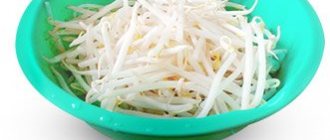Almond milk is one of the best-selling plant-based dairy products due to its rich texture and flavor (, ,).
However, since it is a processed drink, you may wonder if it is healthy and safe.
This article talks about almond milk and what its potential health benefits and harms are.
Almond milk - benefits and harms for the body of women and men
What is almond milk?
Almond milk consists of ground almonds and water, but may include other ingredients, depending on the type.
Most people buy it ready-made, although it is quite easy to prepare at home.
During processing, almonds and water are mixed and then strained to remove the pulp. As a result, we obtain a homogeneous liquid ().
Most commercial almond milks typically have thickeners, preservatives, and flavorings added to improve taste, texture, and shelf life.
Almond milk is naturally free of animal products - meaning it is suitable for vegans, as well as people with a dairy allergy or lactose intolerance ().
However, you should avoid consuming it if you are allergic to nuts.
Summary:
Almond milk is a plant-based drink made from filtered almonds and water. It is naturally free of animal milk and lactose, making it a good option for those avoiding dairy products.
What is almond milk: taste, composition, calorie content
It’s not for nothing that almond milk is considered a dietary product; the energy value of 100 g of the drink (without additives) does not exceed 70 kcal. Most of the drink consists of unsaturated fats - 5.9 g, carbohydrates are contained in the amount of 3.1 g, and proteins - 2.15 g.
Almond milk contains:
- Vitamins B, A, C, D, PP and E
- Calcium
- Potassium
- Phosphorus
- Magnesium
- Iron
- Manganese
- Zinc
- Sulfur
Almond milk is a product of plant origin. This is an excellent alternative to dairy products for those who are lactose intolerant. If we compare it with milk made from soy, wheat and poppy seeds, then the almond drink is significantly superior in terms of taste.
Almond milk has a neutral, nutty taste, which allows it to be added to tea, coffee, and used to make porridge, smoothies, and various desserts.
Almond milk is a dietary product and contains many vitamins and microelements.
Nutritional value, composition and calorie content of almond milk
Almond milk is very low in calories, containing only 39 calories per cup (240 ml). It also contains various nutrients.
One cup (240 ml) of commercial almond milk contains ():
- Calories : 39 kcal
- Fat : 3 grams
- Protein : 1 gram
- Carbohydrates : 3.5 grams
- Fiber : 0.5 grams
- Calcium : 24% of recommended daily intake (RDI)
- Potassium : 4% of RDI
- Vitamin D : 18% RDA
- Vitamin E : 110% of RDA
Almond milk is an excellent and natural source of vitamin E, which is a fat-soluble antioxidant that helps protect your body from free radical damage ().
Some varieties are fortified with calcium and vitamin D, which are important nutrients for bone health. Homemade almond milk is not a good source of these nutrients (, ).
Finally, almond milk is low in protein—1 cup (240 ml) contains only 1 gram ().
Summary:
Almond milk is naturally rich in vitamin E, a disease-fighting antioxidant. During processing, it is usually fortified with calcium and vitamin D. However, it is not a good source of protein.
Calorie content of almond milk (100 g)
| proteins, g | fats, g | carbohydrates, g | kcal |
| 18,6 | 54 | 13 | 70 |
The calorie content of almond milk is considered average, contains a fairly high level of protein, even hazelnuts are inferior in these indicators. The presence of fatty acids does not pose a particular threat to proper nutrition or the fight against extra pounds, because polyunsaturated fats are vital for proper biological reactions.
Benefits of almond milk for the body
Almond milk may provide certain health benefits to humans.
Rich in Vitamin E
Almonds are an excellent source of vitamin E, which is a fat-soluble vitamin important for protecting your cells from free radical damage ().
Vitamin E promotes eye and skin health and may play a role in protecting against diseases such as cardiovascular disease (, ,).
One cup (240 ml) of commercial almond milk provides 110% of the RDA for vitamin E, making it an easy and affordable way to meet your daily needs for this nutrient ().
Unsweetened varieties are low in sugar
Most people eat too much sugar in the form of desserts, drinks and sweeteners. Therefore, consuming low-sugar foods and drinks may help you control your weight and reduce your risk of certain chronic diseases (,).
Many plant-based milks are flavored and sweetened. In fact, 1 cup (240 ml) of chocolate-flavored almond milk can contain up to 21 grams of added sugar - more than 5 teaspoons ().
If you're trying to limit your sugar intake, no added sugar almond milk is a great choice. It is naturally low in sugar - only 2 grams per cup (240 ml) ().
Summary:
Unsweetened almond milk is naturally low in sugar and high in vitamin E, a powerful disease-fighting antioxidant. However, sweetened almond milk may be high in sugar.
Uses of almond milk
Almond milk is a multifunctional product from which a variety of culinary dishes are prepared, just like regular milk. Its advantage is that ground almonds do not have their own taste, so they do not change the taste of the main ingredients. Various dishes are also made from the remaining pulp.
Almond milk is popular in cosmetics, skin and hair care products. In official and folk medicine, almond milk is also in demand. Almond oil is used to make remedies for coughs, migraines, and anemia.
In cooking
Almond milk itself is used as a substitute for regular milk. It is added to dough, porridge and vegetables are cooked on it, smoothies and cocktails are whipped up. Almond juice is an excellent addition to desserts. And if you freeze it in ice cube trays, the cubes can be added to coffee. It is worth considering two simple recipes using milk.
Chocolate spread with hazelnuts
The dish serves 4 servings and takes 25 minutes to prepare. One serving includes 867 kcal.
Ingredients:
- 300 g of dark chocolate in bars or confectionery;
- 150 g hazelnuts;
- 80 g butter;
- 100 ml cow's milk;
- 100 ml almond milk.
Cooking method:
- Separate the pre-dried hazelnuts from the husks and beat with a blender to a powder.
- Mix both types of milk, butter and chocolate broken into pieces, beat everything until smooth.
- Add hazelnuts, stir.
The paste is ready, it can be spread on bread or added as a filling to cakes, cookies and croissants. Store in a jar in the refrigerator. You can use walnuts instead of hazelnuts.
Thick raspberry smoothie
The recipe describes the preparation of one serving, that is, one glass of smoothie. This dessert nutritious drink is dietary and suitable for drinking in the morning. It contains 1043 kcal. It consists mainly of carbohydrates of plant origin.
Ingredients:
- 75 g fresh or frozen raspberries;
- 1 banana;
- 50 g almond milk;
- 1 teaspoon liquid honey;
- half a teaspoon of lemon juice.
Cooking method:
- Press the raspberries through a sieve and set aside.
- Cut the banana into slices and let stand in the freezer for 20 minutes.
- Mix all ingredients in one bowl and beat with a blender until smooth.
Use the drink chilled, but not frozen. You can decorate a light pink smoothie with a mint leaf or a whole raspberry. If the drink seems too sweet, you can add more lemon juice or lime.
In folk medicine
Almond milk is not used in folk medicine; recipes are prepared only from the whole nut. But if there is a certain amount of this vitamin-rich product in its raw form, then part of it can be used to make milk from almonds, and the other part can be used to make medicines.
Where can you use almonds:
- Raw bitter almonds break down alcohol. If you need to stay sober in a company drinking alcohol, then you need to swallow 5 pieces of kernels, which will reduce the effect of intoxication.
- If you suffer from tachycardia and have no appetite, you can eat a sugar cube dipped in nut oil. To do this, you need to crush it so that it begins to release an oily liquid, and add sugar there.
- For constipation, it is recommended to eat almonds due to the presence of a large amount of vegetable fat in them. For the same purpose, nursing mothers consume nut products if the baby suffers from constipation.
The kernels cleanse the liver well. If jaundice is diagnosed, you should eat 5-8 pieces 2 times a day for three days to promote rapid recovery.
In cosmetology
Almond milk is also used for topical use. The product has a moisturizing and softening effect on the skin. Milk is used as a tonic for the body and scalp. The composition also serves as one of the ingredients when making homemade soaps and creams. The remaining pulp is used to make face masks, and if you add ground walnut peel to the composition, you get a natural body scrub that polishes the top layer of the skin.
- To prepare a hair mask, you need to grate almonds until it becomes porridge, then mix with milk until it becomes sour cream. Once every 2 days, apply the mask to the scalp for 30 minutes, wrapping it in cellophane and topping it with a towel. This recipe is designed to heal the follicles responsible for hair growth.
- In the Middle Ages, the Armenian healer Amirdovlat Amasiatsi discovered that if you mix ground bitter almonds with red wine and rub your head with this product, you can get rid of dandruff.
- Bitter almond root is used to make a remedy that whitens skin, freckles, tans and bruises.
Almond husks can be useful as an ingredient in a facial cleansing tincture. To do this, mix 2 tablespoons of husk with 3 cups of boiling water and leave for 4 hours. Wipe your face with filtered infusion.
Potential harms of almond milk
While almond milk has health benefits, there are some important downsides to consider.
Low in protein
Almond milk contains just 1 gram of protein per cup (240 ml), while cow's milk and soy milk contain 8 and 7 grams, respectively (,).
Protein is essential for many body functions, including muscle growth, skin and bone structure, and the production of enzymes and hormones (, ,).
Many non-dairy and plant-based foods are high in protein. These include beans, lentils, nuts, seeds, tofu, tempeh and hemp seeds.
As long as you don't avoid animal products, eggs, fish, chicken and beef are excellent sources of protein ().
Not suitable for babies
Children under 1 year of age should not drink cow's or plant-based milk as they may interfere with the absorption of iron. Until the age of 4–6 months, the baby should receive nutrients exclusively from mother's milk or from infant formula ().
At 6 months of age, offer your baby water as a healthy drink in addition to breast milk or formula. After 1 year, your child's diet may include cow's milk ().
With the exception of soy milk, plant-based drinks are naturally low in protein, fat, calories and many vitamins and minerals such as iron, vitamin D and calcium. These nutrients are essential for growth and development (,).
Almond milk contains only 39 calories, 3 grams of fat, and 1 gram of protein per cup (240 ml). This is not enough for a growing child (,).
If you don't want your baby to drink cow's milk, continue breastfeeding or talk to your doctor about the best non-dairy formula ().
May contain additives
Processed almond milk may contain many additives such as sugar, salt, gums, flavorings, and lecithin and carrageenan (types of emulsifiers).
Certain ingredients, such as emulsifiers and resins, are used to improve texture and consistency. They are safe unless consumed in extremely large quantities ().
However, one test-tube study found that carrageenan, which is commonly added to almond milk as an emulsifier and is considered safe, may compromise gut health. However, more thorough research is needed before drawing any conclusions ().
However, many companies avoid this additive altogether due to these concerns.
Additionally, many flavored and sweetened almond milks are high in sugar. Excess sugar can increase your risk of weight gain, tooth decay, and other chronic diseases (, ,).
To avoid this, opt for unsweetened almond milk.
Summary:
Almond milk is a poor source of protein, fat, and nutrients important for a child's growth and development. Moreover, many processed varieties contain additives such as sugar, salt, flavorings, gums and carrageenan.
Homemade almond milk
In developed countries, almond milk is quite common and can be bought in any supermarket. However, the tetra pack product often contains many preservatives and not very healthy additives. Therefore, real gourmets prefer to prepare this delicious drink themselves.
To prepare a glass of milk you will need:
- Handful of almond kernels
- A glass of warm boiled water
- Sweetener to taste (honey, vanilla, etc.)
To begin with, almonds should be soaked by filling them with water in a ratio of 1 to 3 for 12 hours. During this time, the nuts will get wet and swell.
Then you need to remove the skin from the nuts. To do this, pour boiling water over them and let them stand for 15 minutes.
After mixing the peeled almond kernels with a glass of warm boiled water, you can start grinding them using a blender. It is best to do this in several approaches of 10–15 minutes.
When the drink becomes rich white, squeeze out the nuts. For this, gauze folded in 5-6 layers or regular linen fabric is suitable. The drink is ready. If desired, you can sweeten it with honey, vanilla, add cinnamon or other additives to taste.
Almond milk should be stored in a cool place for no more than 4 days.
In addition, true connoisseurs of this delicacy know some secrets of its preparation:
- If the blender is an old model and does not have much power, you need to grind the nuts through a meat grinder and only then start chopping.
- If you don’t have the equipment, the drink can be made from almond flour, buying it in a supermarket or making it yourself using a coffee grinder.
- To give the milk a creamy color and a richer, nutty flavor, you need to use lightly roasted almonds with their skins for cooking.
- You can add a special piquancy to the drink by chopping nuts along with dates, dried apricots or banana.
There is no need to rush and throw away the leftover almonds after preparing the milk. Nut crumbs are useful for making sweets, cookies or salad. Making almond milk is quite simple, you just need to have nuts and water on hand, and also know some secrets of its preparation.
How to Choose the Best Almond Milk
Grocery stores offer different types of almond milk.
When choosing a product, be sure to look for the unsweetened variety. You can also choose a type without added gums or emulsifiers if those ingredients are of interest to you.
Finally, if you follow a restricted diet, such as vegan or vegetarian, and are concerned about possible nutritional deficiencies, opt for almond milk fortified with calcium and vitamin D.
Homemade almond milk does not contain these nutrients.
Summary:
To get the most benefits, choose almond milk that is unsweetened, unflavored, and fortified with calcium and vitamin D.
How to make almond milk at home
To make your own almond milk, follow this simple recipe.
Ingredients:
- 2 cups (280 grams) soaked almonds
- 4 cups (1 liter) water
- 1 teaspoon (5 ml) vanilla extract (optional)
Soak almonds in water overnight and drain before using. Add the almonds, water and vanilla to the blender and process for 1-2 minutes until the water becomes cloudy and the almonds are finely ground.
Pour the mixture into a mesh strainer that is placed over a bowl and lined with cheesecloth. Be sure to squeeze the mixture to extract as much liquid as possible. You should get approximately 4 cups (1 liter) of almond milk.
Place the liquid in a container and store in the refrigerator for 4-5 days.
Summary:
To make almond milk at home, add pre-soaked almonds, water and vanilla extract to a blender. Grind. Pour the mixture through cheesecloth and a mesh strainer. Store the resulting drink in the refrigerator for 4–5 days.
Contraindications and harm
When consuming, take into account the harm of almond milk, which should not be used by infants under 8-9 months. After receiving a doctor's permission, the product is included in the children's menu 1-2 times a week.
The main contraindications of almond milk are related to individual intolerance (nut allergy).
For adults, the maximum daily intake is 400-500 ml.
If an allergy to almond milk manifests itself in the form of hives, swelling, itching, stop using the product immediately.
How to make almond milk
Various techniques are offered to demonstrate how to make almond milk at home.
For the traditional recipe, raw almonds are used - 120 g:
- The product is poured into a glass container.
- The raw materials are completely filled with filtered water at room temperature.
- After 8 hours, place on a sieve, draining the water.
- The surface skin is removed from the nuts.
- Add 500 ml. purified cool water.
- Using a blender, grind the nuts and beat the mixture until smooth.
- The finished milk is filtered through a gauze cloth.
There is another recipe for making almond milk:
- 50 gr. Peeled nuts are ground in a mortar to the smallest crumbs.
- Transfer the pulp into an enamel mug with 100 ml. purified water.
- Heat the mixture in a steam bath for 5 minutes.
- After cooling, squeeze the finished drink through double gauze.
Almond milk is given a certain flavor by adding a small amount of crushed dates, sea salt, cinnamon, good quality honey or vanilla powder.
Summarize
- Almond milk can be a great plant-based option for those avoiding cow's milk.
- Unsweetened varieties are low in calories and sugar but high in vitamin E.
- However, almond milk is low in protein, and sweetened types can be high in sugar.
- If you like almond milk, be sure to stick to the unsweetened and unflavored versions and add other protein-rich foods to your diet, such as eggs, legumes, nuts, seeds, fish and chicken.
Tags: Almonds, Milk
- Related Posts
- Instant coffee: health benefits and harms
- How much caffeine is in tea compared to coffee?
- Raw water: can you drink it?
« Previous entry











